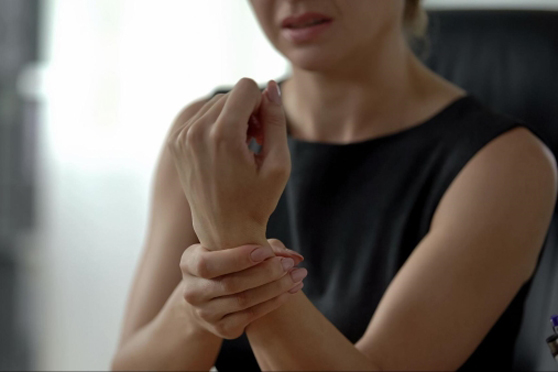The best way to overcome these challenges is by getting treatment fast and finding ways to adapt your lifestyle while you heal.
Tips for Being One-Handed as You Recover
It is easy to forget how much we use our hands on a daily basis until an injury prevents us from using one. These tips for adapting to your hand or wrist injury may help make your everyday life easier.1. Use Other Body Parts When You Can
To ensure a speedy recovery, you must avoid overusing your hand or wrist while it heals. This may seem impossible, but there are ways to get around it. One way is to use other body parts to do the work for you. Tricks like using your elbow to open doors or carrying objects under your arm rather than in your hand are good examples of how you can take the load off.2. Invest in Helpful Tools and Gadgets
There are all sorts of tools and gadgets on the market that can help you do everyday tasks with a wrist or hand injury. For instance, one-handed can openers, buttonhooks, zipper pulls, and reach extenders may help with tasks that typically require two hands.3. Seek Help When Needed
Don't be afraid to ask for help when you need it. Trying to do everything by yourself may lead to further injury and set back your recovery. If you need help with things like cooking or cleaning, don't hesitate to reach out to friends and family or hire a professional service.Ways to Speed Up Your Recovery
While you are waiting for your hand or wrist injury to heal, there are a few things you can do to help with the recovery process. A combination of at-home and professional treatments will give you the best chance for a complete recovery. Always ask your provider for their recommendations for your at-home care. These may include:- Wearing a splint or brace
- Doing range of motion and stretching exercises
- Applying ice to the affected area
- Using heat therapy
- Receiving professional physical therapy
- Taking anti-inflammatory medication
- Trying massage therapy
How to Prevent Hand and Wrist Injuries
Some injuries—especially acute injuries from an unexpected accident or fall—are not preventable. But, by doing your due diligence and taking some preventative measures, you can reduce your risk of many hand and wrist injuries. Ways to avoid hand and wrist injuries include:Use Correct Form When Exercising
Hand and wrist injuries are often caused by repetitive motion. Therefore, if you repeatedly make the same hand and wrist motions, it is important to use the correct form. This will help ensure your muscles, tendons, and ligaments are all working together as they should and may reduce the risk of injury. Should exercises begin to feel painful, check in with an orthopaedic provider to gain insight into how you can correct or adjust your form.Wear the Right Protective Gear
If you participate in activities that could lead to a wrist or hand injury, it may be beneficial to wear protective gear. Wrist guards, gloves and other types of padding may help reduce the impact of a fall or collision and help prevent hand and wrist injuries.Strengthen Your Wrist and Hand Muscles
One of the best ways to prevent hand and wrist injuries is to keep the muscles in these areas strong. Strong muscles provide support and stability and are a key component in avoiding injuries. Wrist and hand exercises are often easy to do and can typically be done at home. Ways to strengthen your wrists and hands include:- Wrist curls
- Flexion and extension exercises
- Squeezing a ball for grip strength
- Using a rubber resistance band


